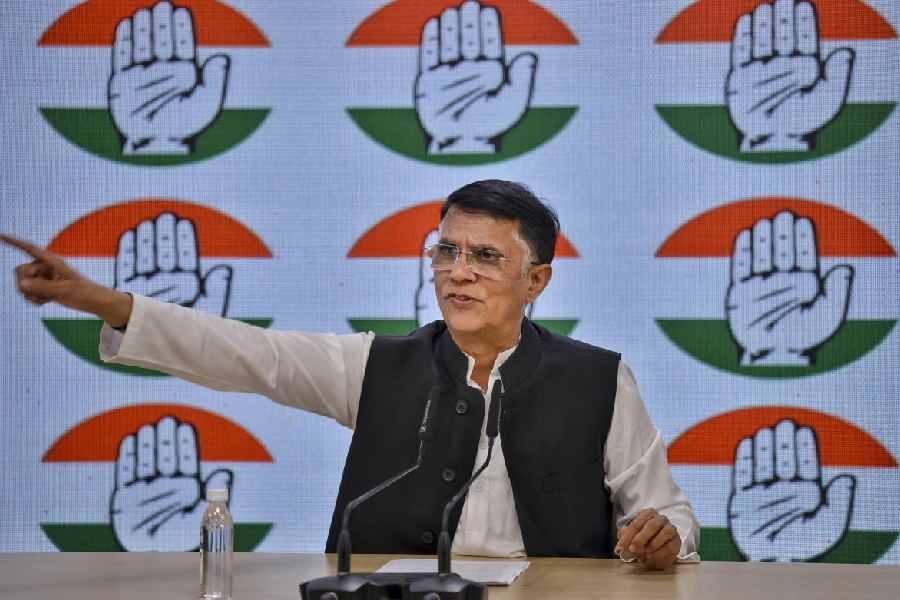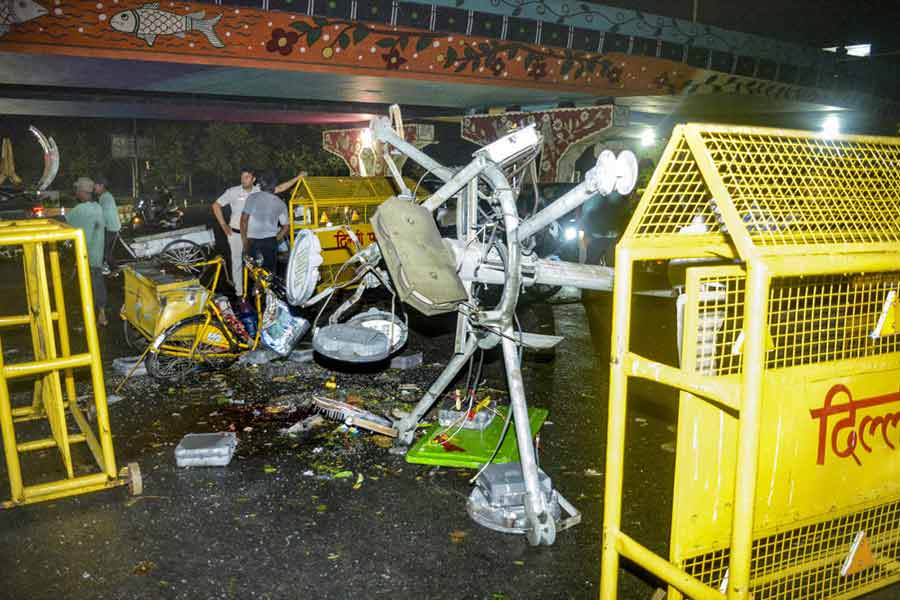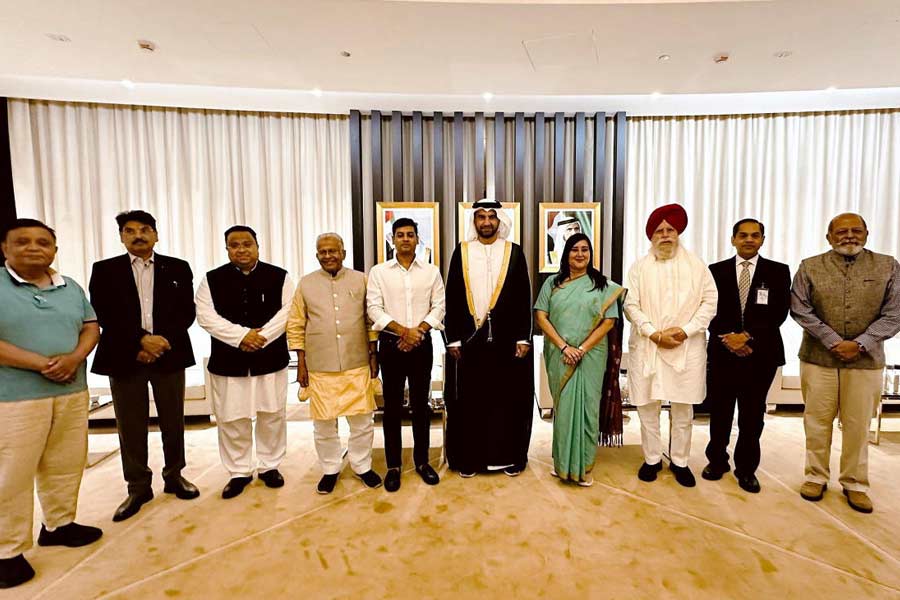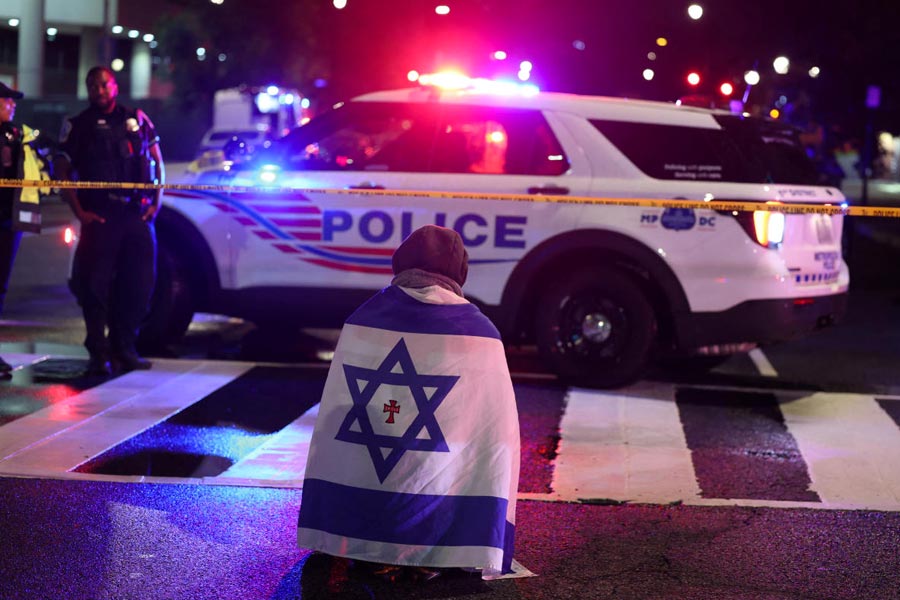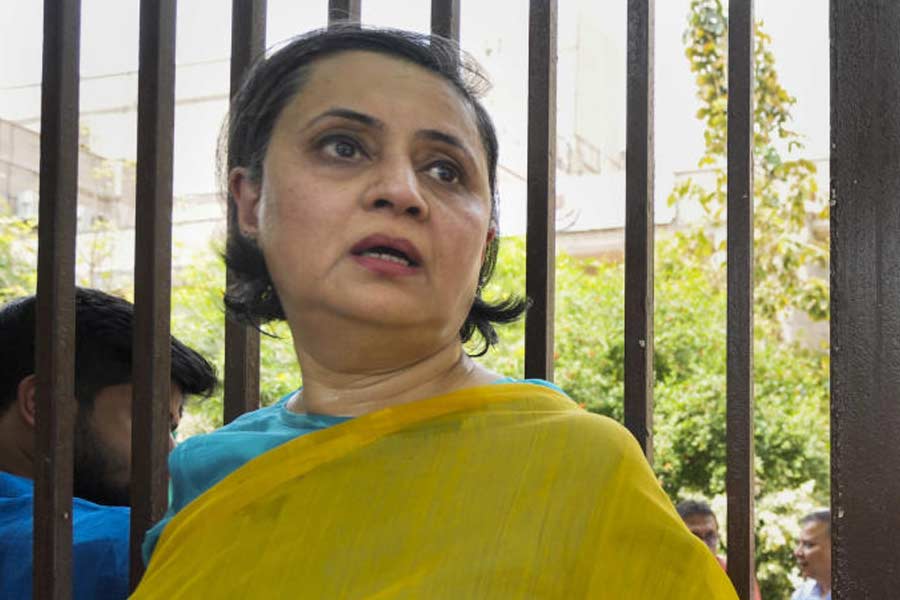 |
| The mosque in Panjwana village in Sirsa. Maange Lohar (below) , a “vegetarian” Muslim from Maham town that has about 30 families from the minority community. Pictures by Rajesh Kumar |
 |
This mosque has survived the lips of time. But no prayer has passed here through the lips of faith. Not in half a century, at least.
There is no one to pray. In Panjwana village, every resident is a Hindu. The Muslims had all left for Pakistan in 1947.
As you drive through villages of west Haryana, abandoned mosques whiz past, some of them still striking in their lonely splendour. Partition has left the region — then south Punjab — with a negligible minority population.
The lopsided demographics become evident on NH10, the national highway that connects Rohtak, Hissar and Sirsa, though many villages have Muslim names. But like the old mosque bereft of its band of faithful, these villages have few — or no — Muslims.
Take, for example, Bahu-Akbarpur, the first village on the highway after Rohtak. It is dominated by Jats. Not a single Muslim family lives in the village.
Madina is the next village. It has just three Muslim families. They are not original inhabitants but migrants who settled here while working as farm labourers.
The third big settlement, Maham town, 32km from Rohtak, is home to more than one abandoned mosque. Only 30-odd Muslim families live on the western fringes of the town.
A dilapidated brick mosque stands just beside the highway in Maham. Those who live around it are all Hindus. “This is abandoned. It is under the wakf board but neglected. It will collapse some day,” said Surinder Chitkara, who lives by the mosque.
Maham, said Chitkara, a government servant, had a substantial Muslim population before Partition and some 60 mosques. Only a couple stand now.
In Panjwana village, the panchayat has taken control of the mosque. One of the rooms now serves as an anganwadi centre.
Apart from the Muslim-majority district of Mewat, the home of the Meo Muslims — believed to have been “Kshatriyas who converted to Islam but retained many of their Hindu traditions — the rest of Haryana has hardly any minority population. Too few to make any difference to electoral calculations.
Not surprisingly, most were reluctant to discuss the elections even hours before Haryana voted on April 10.
Some were even reluctant to reveal their religious identity. “Yes, I am a Muslim,” said Maange Lohar, before quickly adding that he was a “vegetarian”.
“Muslims here are no different from Hindus. We don’t eat meat,” said the blacksmith who ekes out a living by making small farming tools.
Every week, Maange and other Muslims from some 10 nearby villages assemble at a mosque 3km away for Friday prayers.
Sirsa town, near the Punjab-Rajasthan border, however, has a substantial Muslim population. A grand Jama Masjid stands here. Although no official records are available, local people say Muslims number around 20,000 in the district.
“We can gauge the population when people gather here at the Jama Masjid for Id prayers. According to estimates, it is around 20-25,000,” said Ali Hussain, who runs a small garment shop outside the mosque.
Hussain feels the two communities have coexisted peacefully.
Veteran journalist Vaidya Mahaveer Parsad agrees. There was a time, he said, when it was “hard to differentiate” Muslims from Hindus. “But the demolition of the Babri mosque changed everything. Many Muslims in Sirsa started wearing skull caps, renovated the Jama Masjid and became very particular about offering prayers.”
Still, Hussain feels, Hindus and Muslims have remained similar, socially and even culturally. “The food offered during nikahs (weddings) here is vegetarian. Apart from the nikah, most traditions we follow are similar to that of Hindus.”
Who would they vote for?
Quick came the reply: “Whoever is the choice of the majority.”
● Haryana voted on April 10


